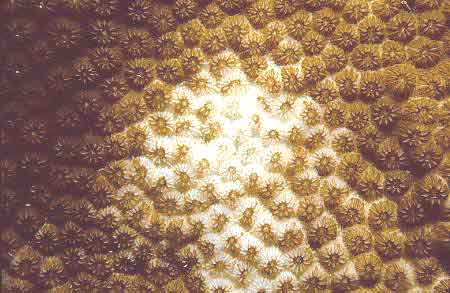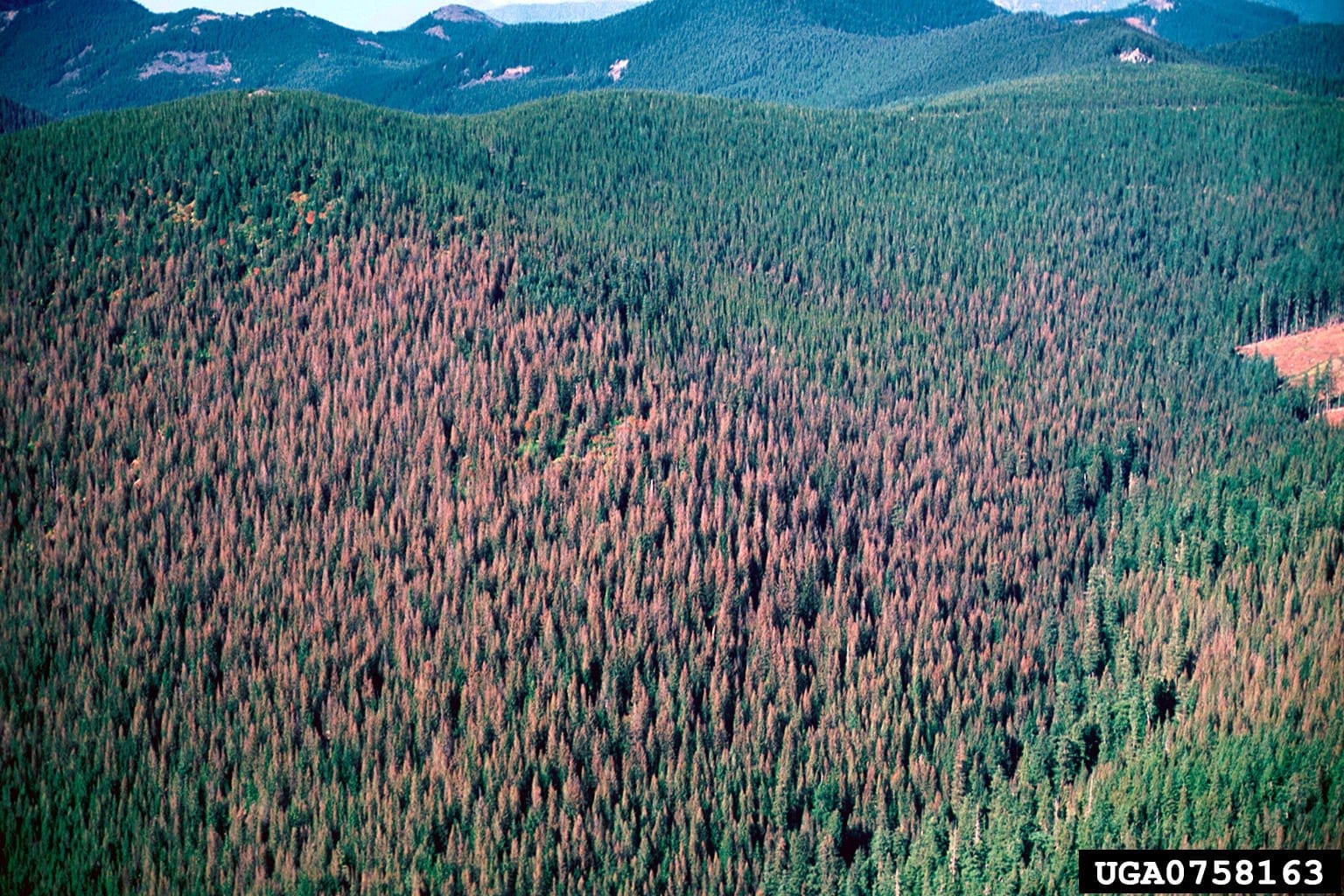
David Vaughan plunges his right arm down to his elbow into one of nine elevated tanks where thousands of tiny colonies of coral are growing at an astonishing rate in shaded seclusion next to the Mote Tropical Research Laboratory.
“Now this is the exciting part. You ready for this?” he asks, straining to be heard over the relentless hiss of filtered saltwater squirting from a maze of pipes and plastic tubing into the shallow fiberglass tank, the size of a dining-room table.
Dr. Vaughan, a marine biologist who is executive director of the laboratory, retrieves a flat rock from the bottom. A chocolate-brown colony of brain coral, nearly eight inches wide, has grown on the stony surface, its distinctive fleshy, serpentine folds nearly covering the rock.
A year ago the colony began as inch-and-a-half-wide coral fragments cut with a band saw from the same parent colony. As if doused with a growth elixir, these coral “seeds” began to grow 25 times as fast as they would in the wild.
And when arranged a few inches apart on the rock, the mini-colonies quickly advanced across the surface and fused to become a single grapefruit-sized organism that continues to grow.
Other species grown from tiny coral seeds in the Mote lab have developed even faster — up to 50 times their normal rate.
Dr. Vaughan and a staff biologist, Christopher Page, say this quick-grow technique, called microfragmenting, may make it possible to mass-produce reef-building corals for transplanting onto dead or dying reefs that took centuries to develop — perhaps slowing or even reversing the alarming loss of corals in the Florida Keys and elsewhere.
“This is real,” Dr. Vaughan said. “This potentially can be a fix.”
Other scientists are excited, too. While there are other efforts around the world to grow new coral, “this is easily the most promising restoration project that I am aware of,” said Billy Causey, a coral expert who oversees all federal marine sanctuaries in the Southeastern United States, the Gulf of Mexico and the Caribbean for the National Oceanic and Atmospheric Administration.
“Dave and Chris are buying us time,” he added. “This will keep corals out there” until “we can come to understand what is happening to coral on the larger scale.”
Still, even Dr. Vaughan’s cheery optimism has its limits. A quarter of the earth’s corals have disappeared in recent decades, and the Mote scientists say no one can predict what will happen if the oceans continue to warm, pollution and acidification increase, overfishing further decimates species beneficial to coral, and land runoff continues to reduce the amount of life-giving sunlight that reaches the bottom.
“We do not know if this is a fix-all,” Mr. Page said. “At worst, we’re buying a little time. At best, we could restore the ecosystem.”
The Latest on: Transplant for Coral Reefs
[google_news title=”” keyword=”Transplant for Coral Reefs” num_posts=”10″ blurb_length=”0″ show_thumb=”left”]
via Google News
The Latest on: Transplant for Coral Reefs
- Reuters Videoon April 30, 2024 at 5:00 pm
Macro Matterscategory Powell's soothing tone may not be enough for inflation-spooked markets 5:04 AM UTC Macro Matterscategory OECD upgrades global growth outlook as U.S. outperforms 7:05 AM UTC ...
- Have the world’s coral reefs already crossed a tipping point?on April 29, 2024 at 1:45 am
Earlier this month, the world officially entered its fourth — and probably worst — mass coral bleaching event in history, according to the National Oceanic and Atmospheric Administration and the ...
- Here are 6 ways to avoid being a shark snack in SC waters this summeron April 27, 2024 at 2:00 am
Avoid wearing shiny clothing and objects that might appear like a fish flashing in the water. Avoid swimming in and around schools of bait where sharks may be feeding or come to feed. A good indicator ...
- Technology and data initiatives aim to preserve the world’s declining coral reefson April 26, 2024 at 1:38 am
Coral reefs have been described as the “rainforests of the ocean”. Which is why these two initiatives to try and preserve them are so important.
- A coral-bleaching event is devastating reefs globally − threatening tiny creatures whose beauty and biology have shaped human cultures for centurieson April 25, 2024 at 11:02 am
Coral’s biological uniqueness and central role in sustaining other forms of life, including humans, are reasons enough to preserve it. And scientists are making extraordinary efforts, such as ...
- It’s One of the Last Pristine Coral Reefs on Earth. Should We Be Visiting It?on April 24, 2024 at 12:15 pm
The Raja Ampat archipelago of Indonesia looms large in the imaginations of underwater adventurers. But by visiting its relatively untouched reefs are we protecting them—or threatening them?
- 14 recent scientific breakthroughson April 24, 2024 at 8:40 am
T cells are integral in the immune system but can become "dysfunctional inside tumors." "The approval of Amtagvi represents the culmination of scientific and clinical research efforts leading to a ...
- Let the Seas Rise and Feed the Pooron April 22, 2024 at 9:08 am
Helping marine biodiversity flourish is a means of participating in God’s work, says an Indonesian theologian.
- New study surfaces hope for coral reef recovery efforts: 'This is a really encouraging discovery'on April 21, 2024 at 12:00 pm
"It's possible to restore even very damaged reefs back to healthy, functional systems within relatively short periods of time." ...
- New artificial reefs program set to begin with project off Key Weston April 20, 2024 at 5:59 am
A new artificial reefs program that scientists hope will help reduce stress on the Florida Keys' fragile marine ecosystem has started this month — with the first project off Key West already in the ...
via Bing News










